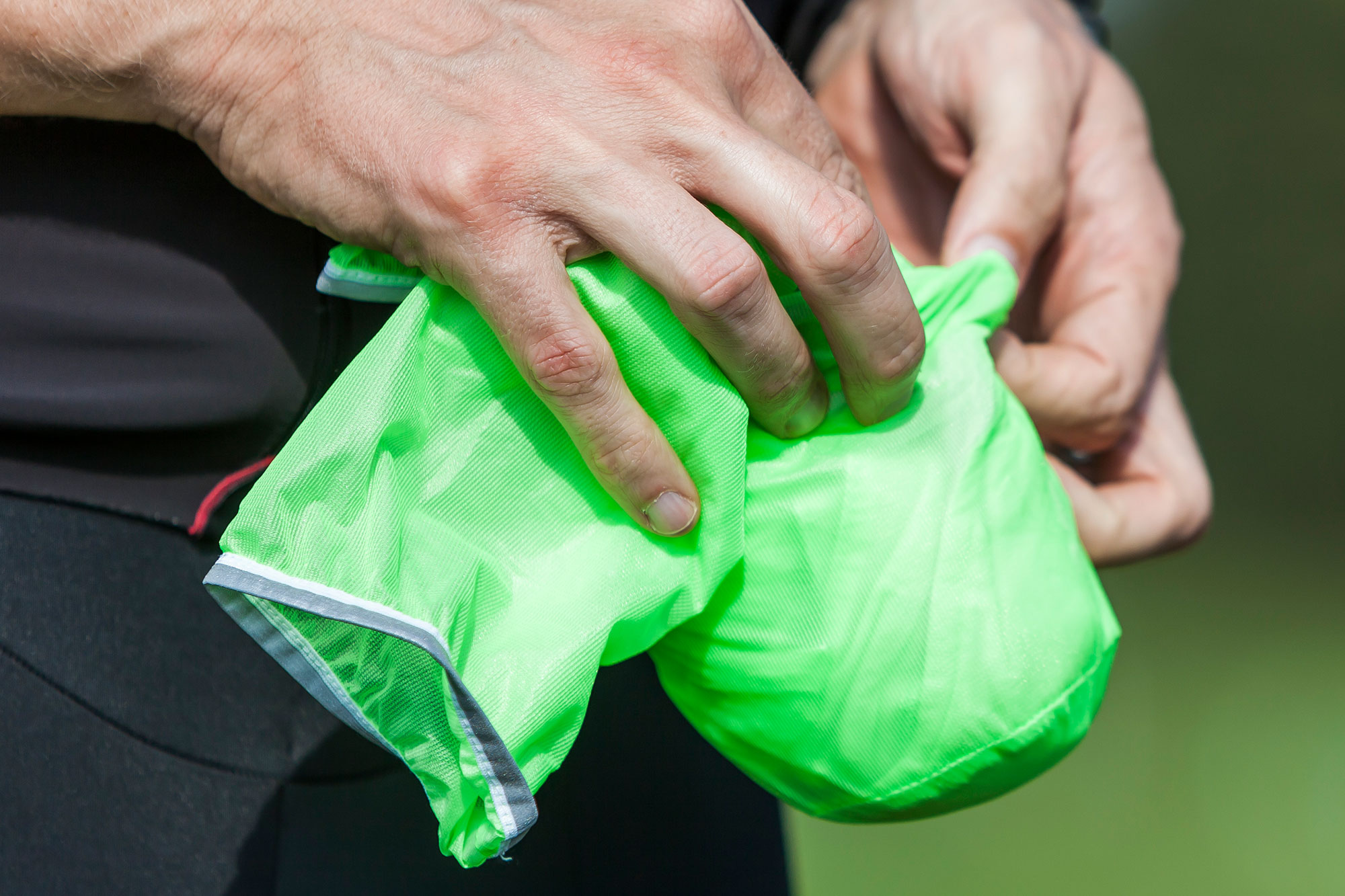
The best packable rain jackets for cycling
The best packable rain jackets can be stashed in a pocket when not needed, but will protect you from the rain when required, whilst still being breathable
It’s an unfortunate fact of life that it’s not always warm and sunny when we want to go riding. Therefore, having one of the best packable rain jackets that can be deployed when necessary should be a staple part of any rider’s wardrobe. Even in the summer, the weather can be changeable, especially if you are heading into the high mountains or planning to be out all day.
Whilst you could opt for one of the best waterproof cycling jackets or best winter cycling jackets, if you know it’s going to rain the whole ride, however, thats rare, and most would prefer something a little lighter and easier to carry. Packable rain jackets still have to fit well, offer excellent protection against the weather and breathe well so we don’t get damp from the inside out.
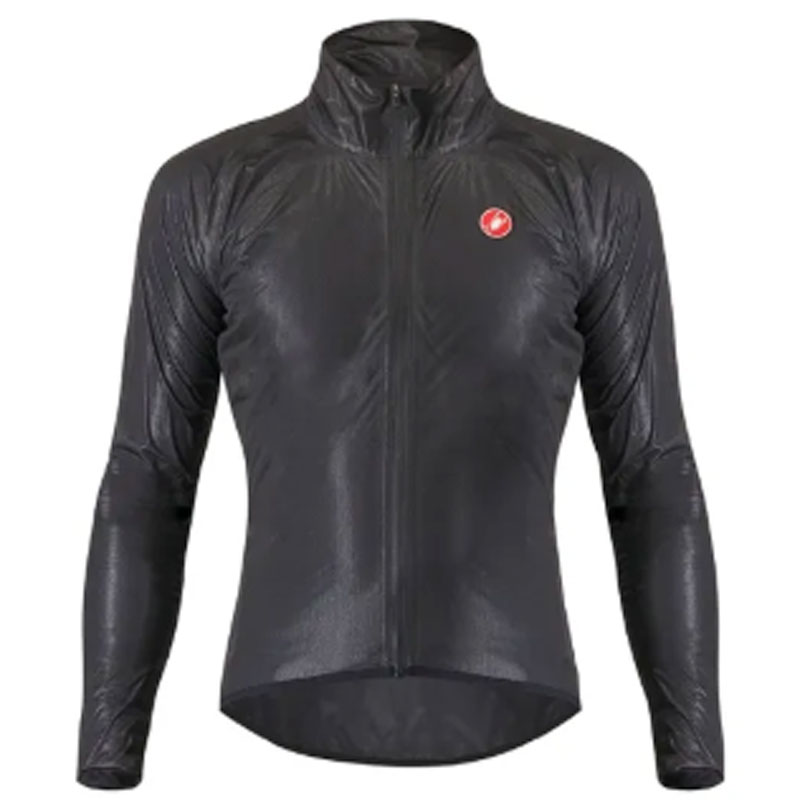
Waterproof, breathable and very well cut, the Castelli Squall Shell weighs less than 100g and yet is still fully taped. The material is stretchy, so it can be close-fitting without feeling restrictive.
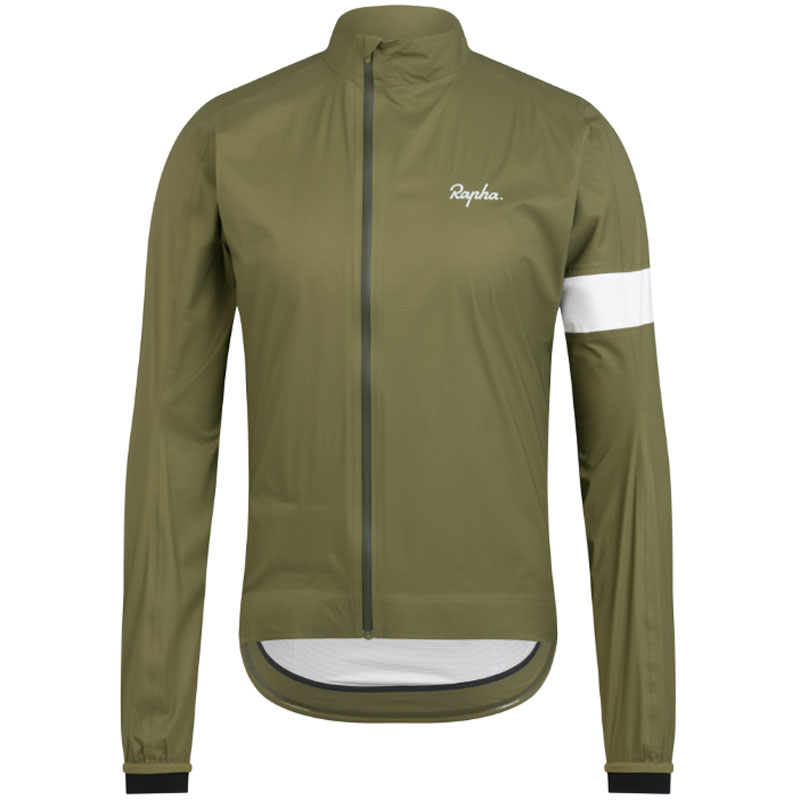
Light and packable, with a high level of waterproofing and design details not always found at this price point.
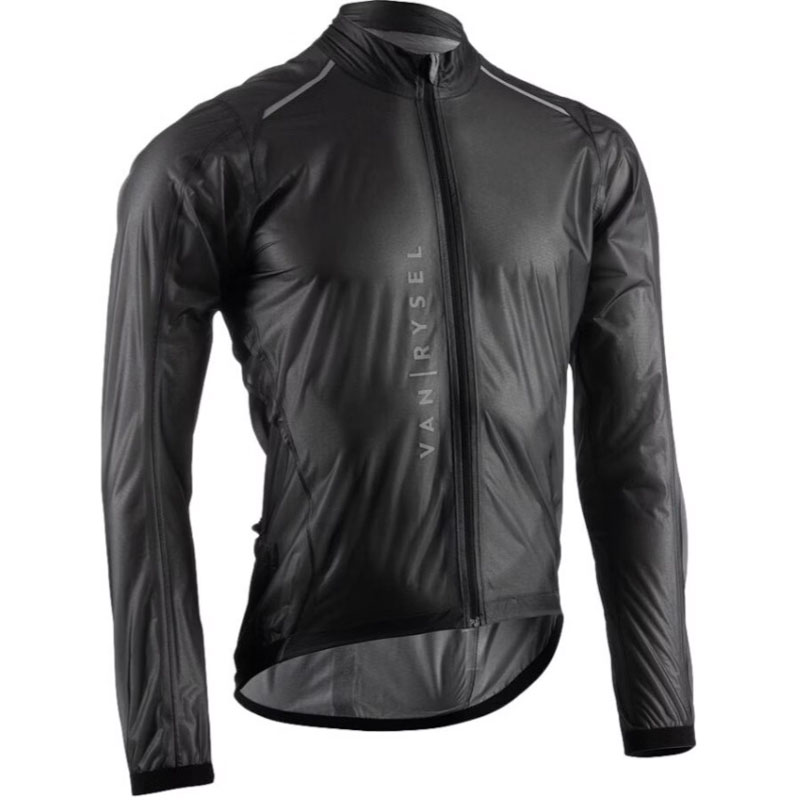
Van Rysel do it again. A light and packable jacket that delivers decent shower protection, all in a nice race fit, without breaking the bank.
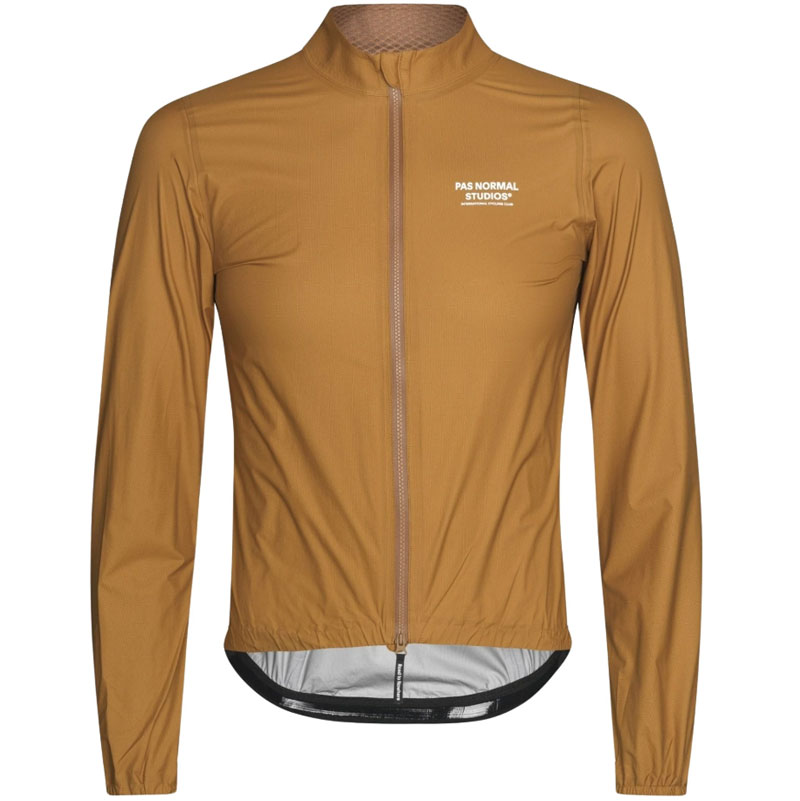
An understated race cape that weighs just over 100g, packs away in a pocket with ease and, vitally, keeps you dry.
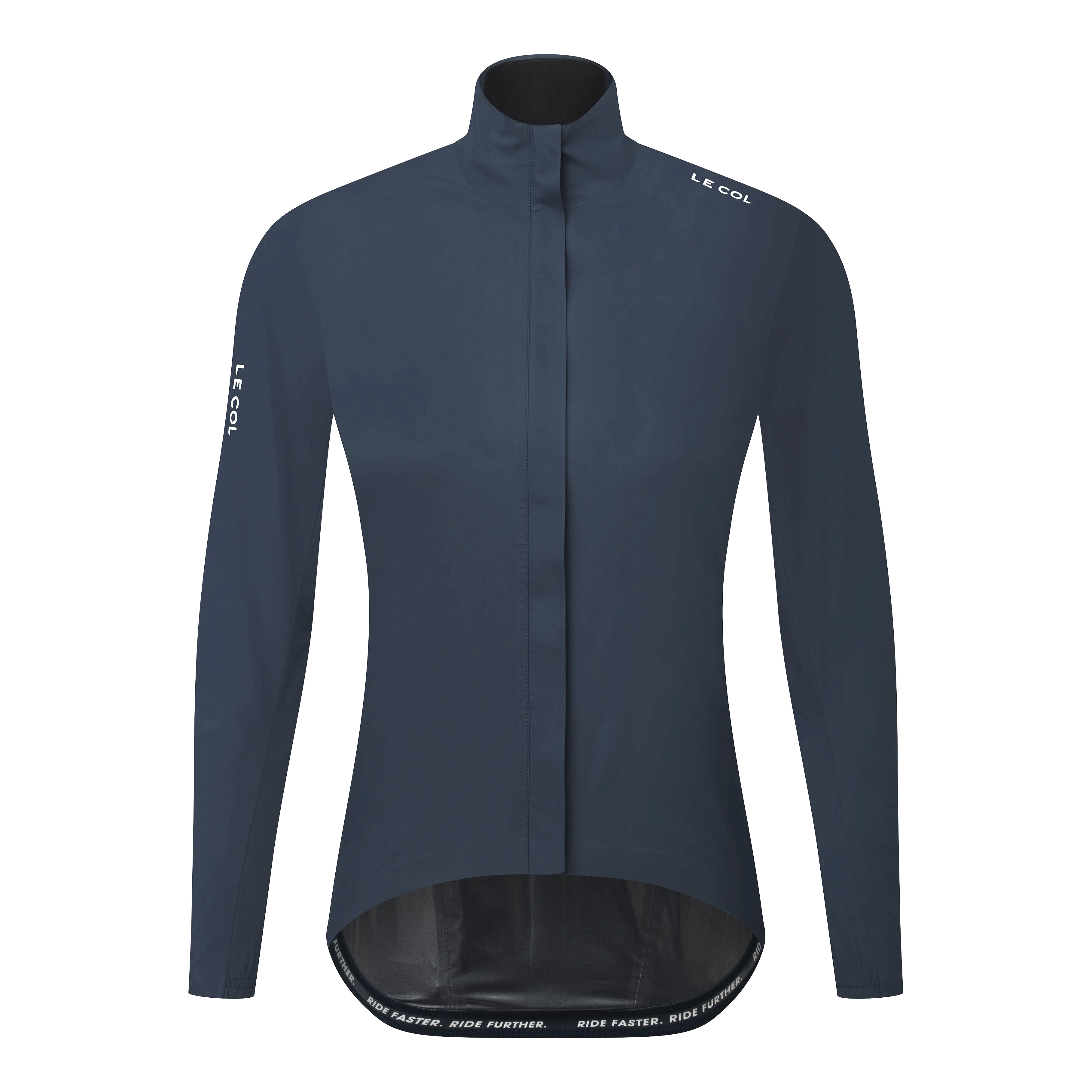
Its price may not appear as good value to some, but considering its performance and specifications compared to its competitors, the Le Col Pro Lightweight provides exceptional value.
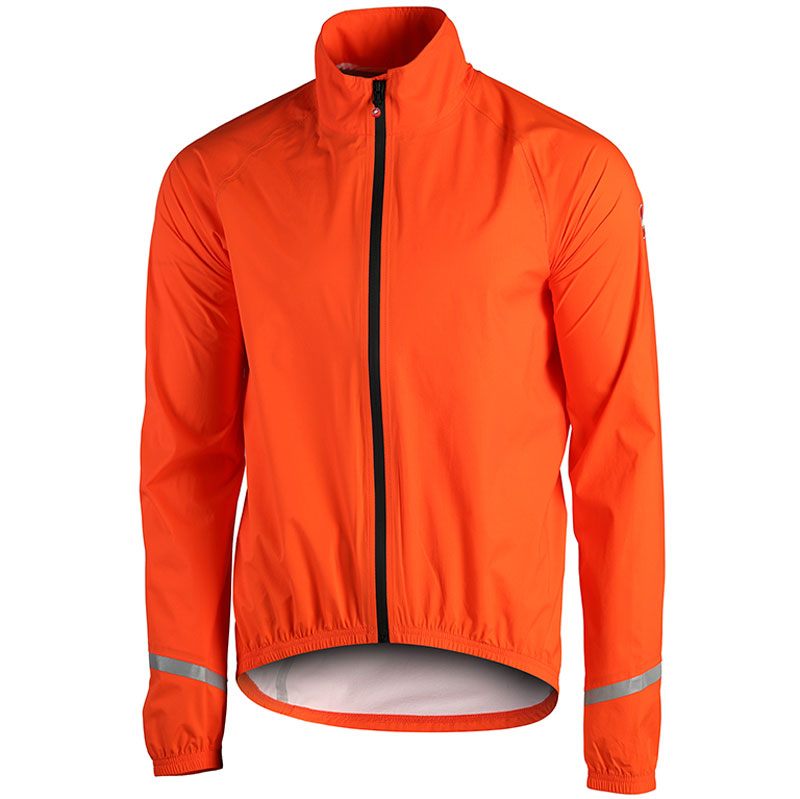
Designed to fit over layers and with plenty of reflective detailing this packable waterproof is ideal for the daily commute.
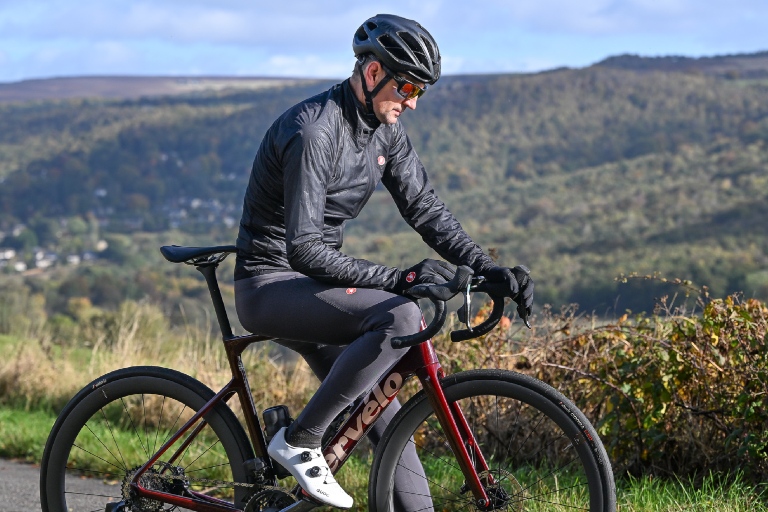
Castelli Squall Shell
Our expert review:
At just over £100 and just under 100g, the Castelli Squall Shell offers good value for money and excellent performance on the road. The fabric is gossamer-light and virtually translucent, yet it has a good element of stretch that provides a non-restrictive fit and is fully taped for total protection against the elements. There is a single, large, reflective stripe down the back and a reflective Castelli logo on the left arm.
As the name suggests, it's a garment designed to be carried and put on when necessary rather than worn all day long in torrential rain, but within that remit, it works very well. Or test thought that the breathability was perfectly good for a jacket of this price and style, providing great weatherproofing when called upon without getting instantly soaked from the inside out.
He had no complaints about its packability either, as it rolls down incredibly small for a taped, full-zip jacket. Unfortunately, there is no stuff bag or handy stow pocket, so you'll have to use a small plastic bag.
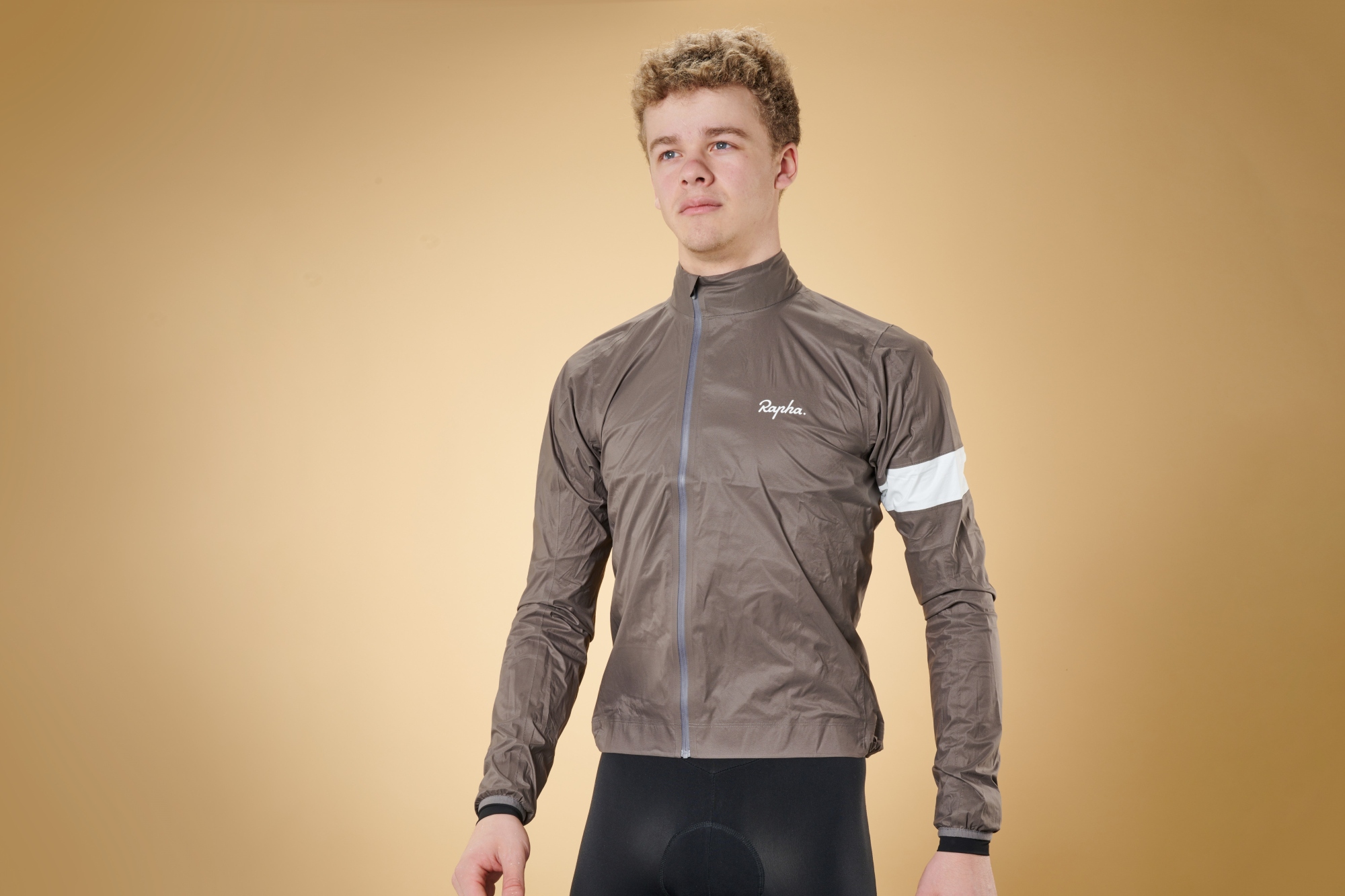
Rapha Core Rain jacket II
Our expert review:
Rapha’s Core Rain Jacket II offers plenty of features and delivers an impressive performance - and all at a price point that makes it truly great value. At 126 grams it's light and packable and we found that easily fitted into a jersey pocket when rolled up.
Being that it uses a 2.5 layer nylon fabric combined water-resistant zip it's more than able to stand up to sustained showers - we were impressed with the quality of the seams and their ability to keep water at bay. The close but not race cut makes it versatile for training, racing and more casual rides too - and the elastic drawstring at the bottom of the jacket allows you to dial in the fit even more.
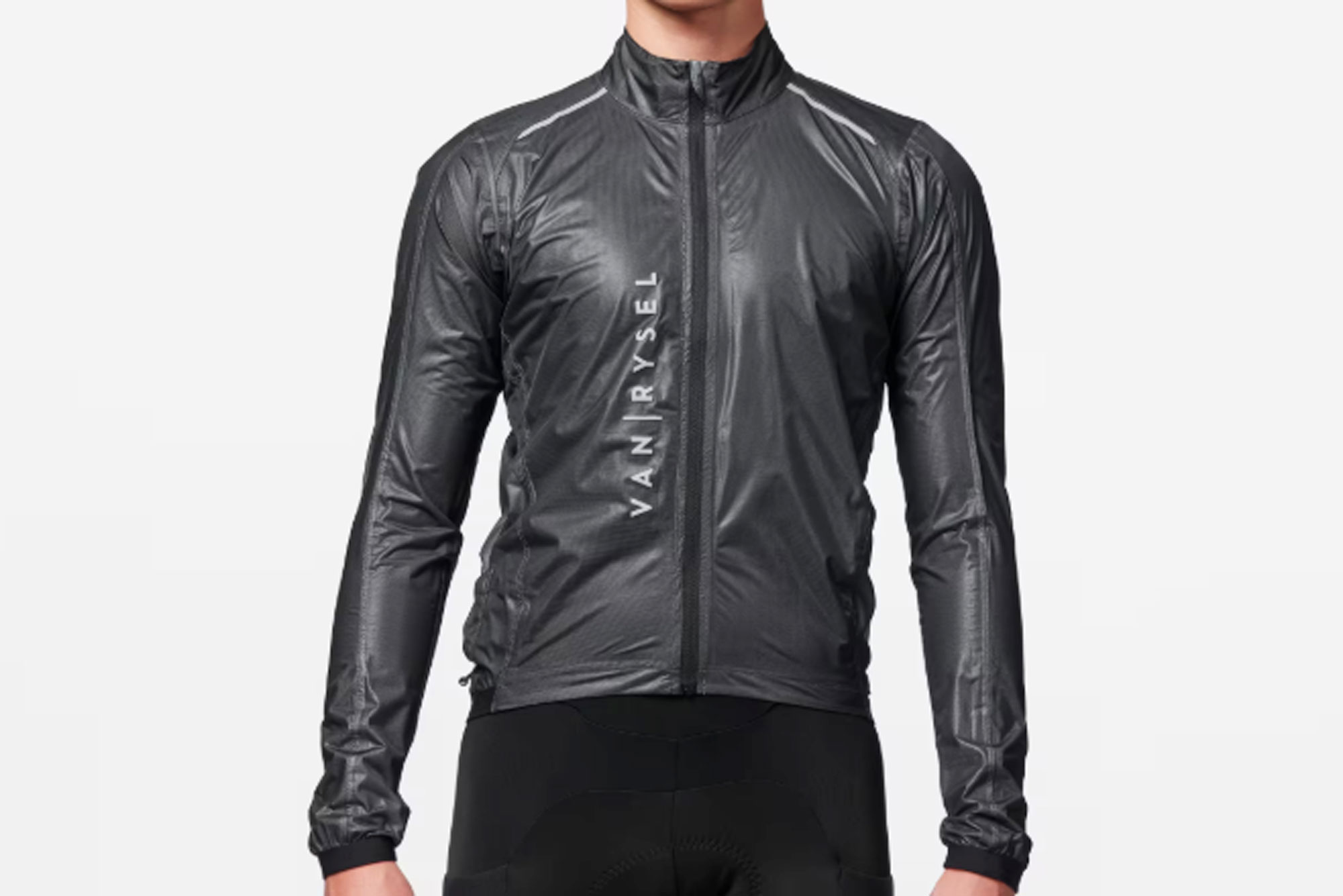
Van Rysel Ultralight jacket
Our expert review:
Making a weather-resistant cycling jacket that can easily be stowed in a pocket doesn’t have to mean a triple-digit price tag. The Ultralight from Van Rysel is a fraction of the cost of many of the other offerings featured here but might be all you need.
At a claimed 140g it’s competitive on the scales, and stuffs inside its own pocket, making for a neat and tidy package that should fit into most jersey pockets. The jacket uses a 2.5 layer PU-coated fabric with a waterproof rating that’s likely to make it water-resistant rather than waterproof in sustained downpours but should comfortably fend off light or brief showers. Design details that caught our eye include a close fit, a full-length zipper, shoulder and armpit vents and reflective accents.
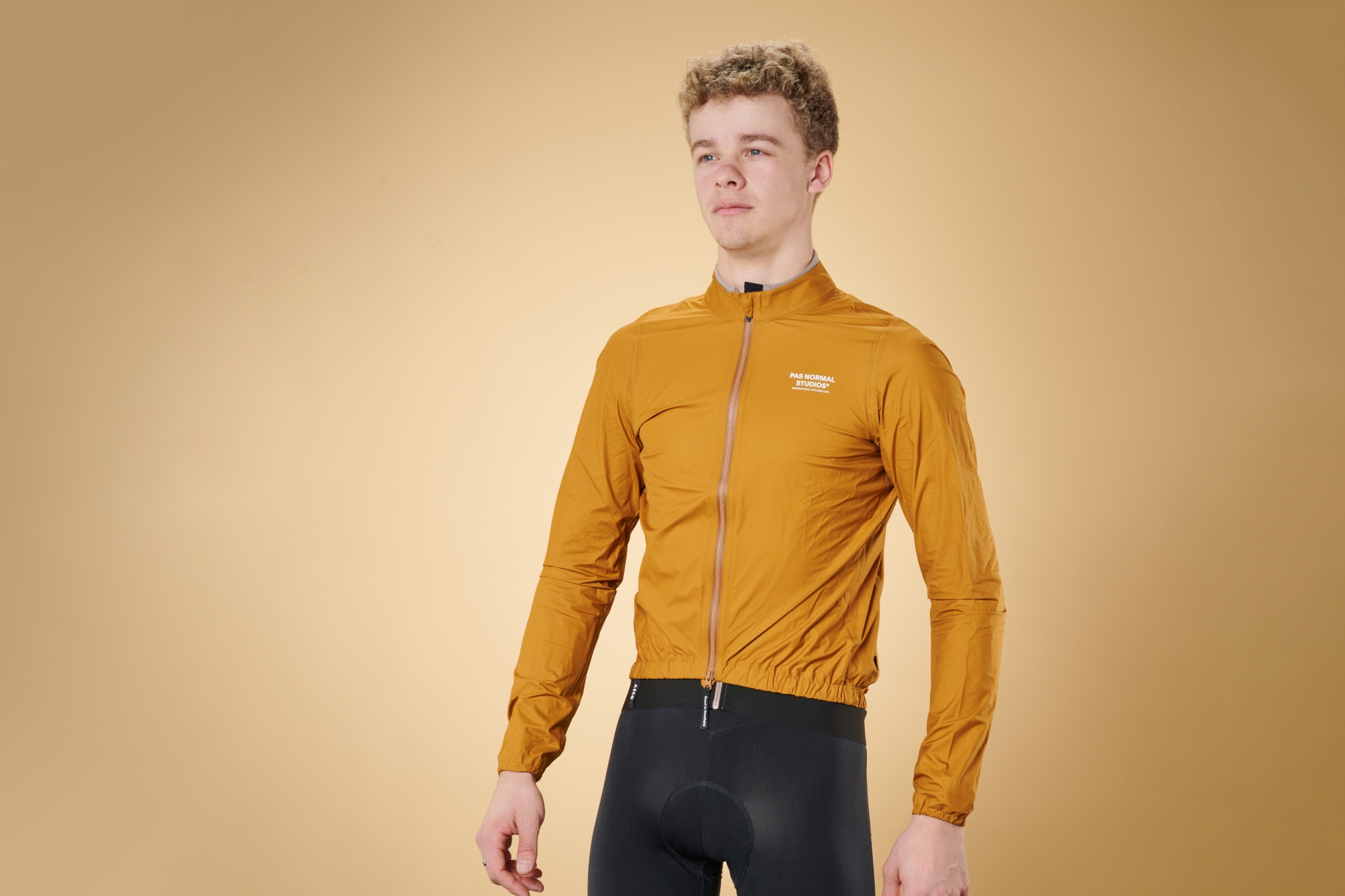
Pas Normal Studios Mechanism rain jacket
Our expert review:
The Mechanism jacket from Pas Normal Studios is a minimal but high-performing jacket in the 'race cape' mode. This means a close fit, with a high front and long arms for use in the riding position, no pockets and simple elastic cuffs. In essence all you need to protect you against showers when racing or training and no more.
And protect it us it did. We experienced little ingress even during extended periods of rain. Impressively it allowed us to breath too - not something that all rain jackets do successfully. Vitally at just 105g it packs up to 'nothing' and can be stowed away with ease until required.
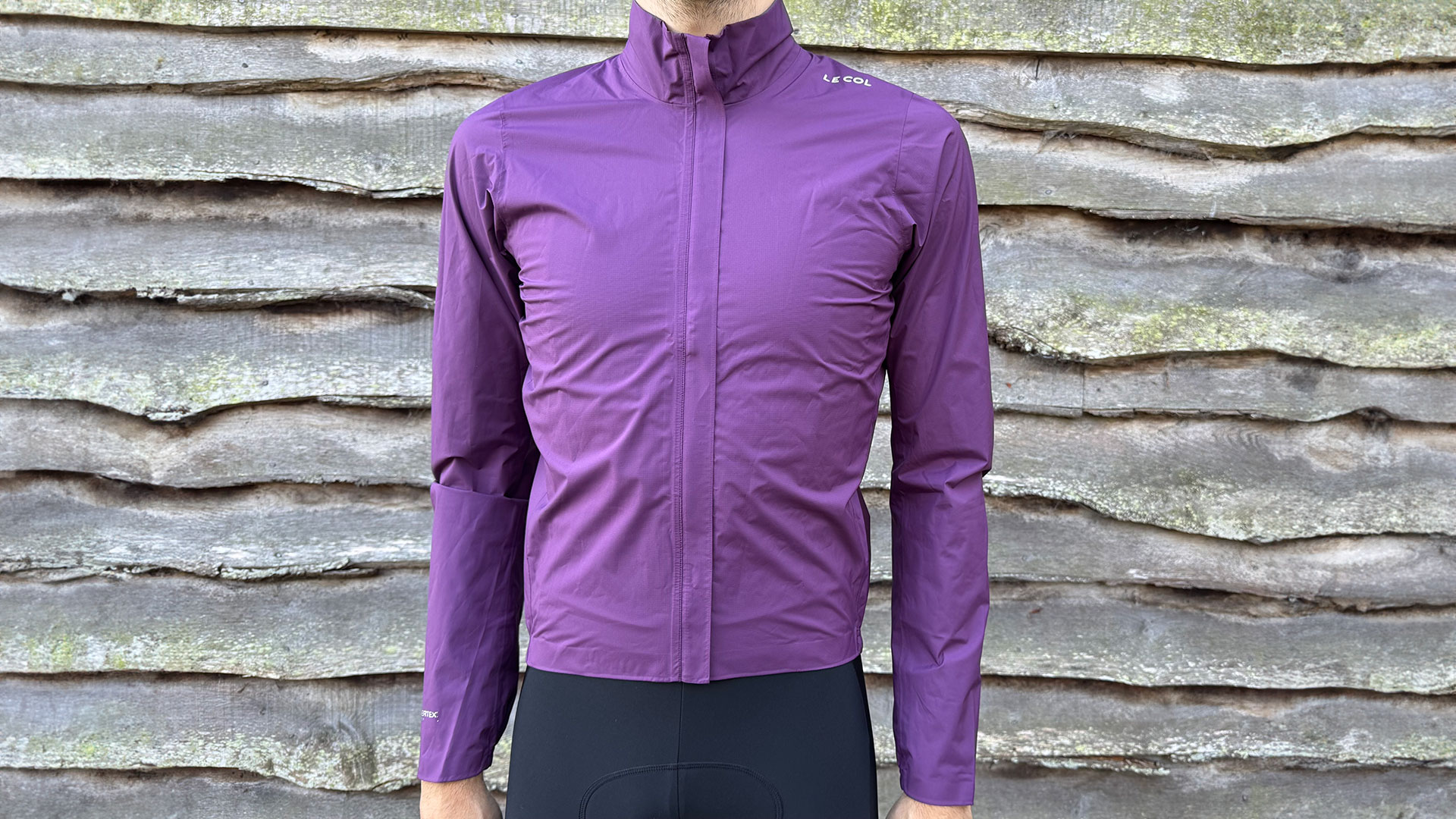
Our expert review:
The Le Col Lightweight Rain Jacket comes from their 'Pro' line of performance-focused apparel. This indicates that Le Col has put effort into optimising aspects like speed and aerodynamics, not just fabric and fit. Additionally, like all the jackets in this guide, this one now features PFC-free materials. For the Pro Lightweight, Le Col selected Pertex Shield to boost waterproofing, along with fully taped seams.
Thanks to the excellent Pertex fabric and taped seams, the Pro Lightweight performs its main function: keeping you dry. The innovative Pertex design blocks large rain droplets while allowing smaller vapour molecules to pass through. However, it can still feel a bit stuffy, which is an area where most modern, eco-friendly fabrics could improve over Shake-Dry. Although the Pro Lightweight offers better breathability than other PFC-free jackets I've tested, I wish Le Col had included a two-way zip for easier ventilation during warmer days, slow climbs, or high exertion.
Overall, Le Col has done an excellent job with this jacket. Its packability is superb, and the fit is quite good, though not perfect; this is understandable given how easy it is to put on and take off. It also offers exceptional value compared to other premium brands like Pas, Rapha, MAAP, and POC.
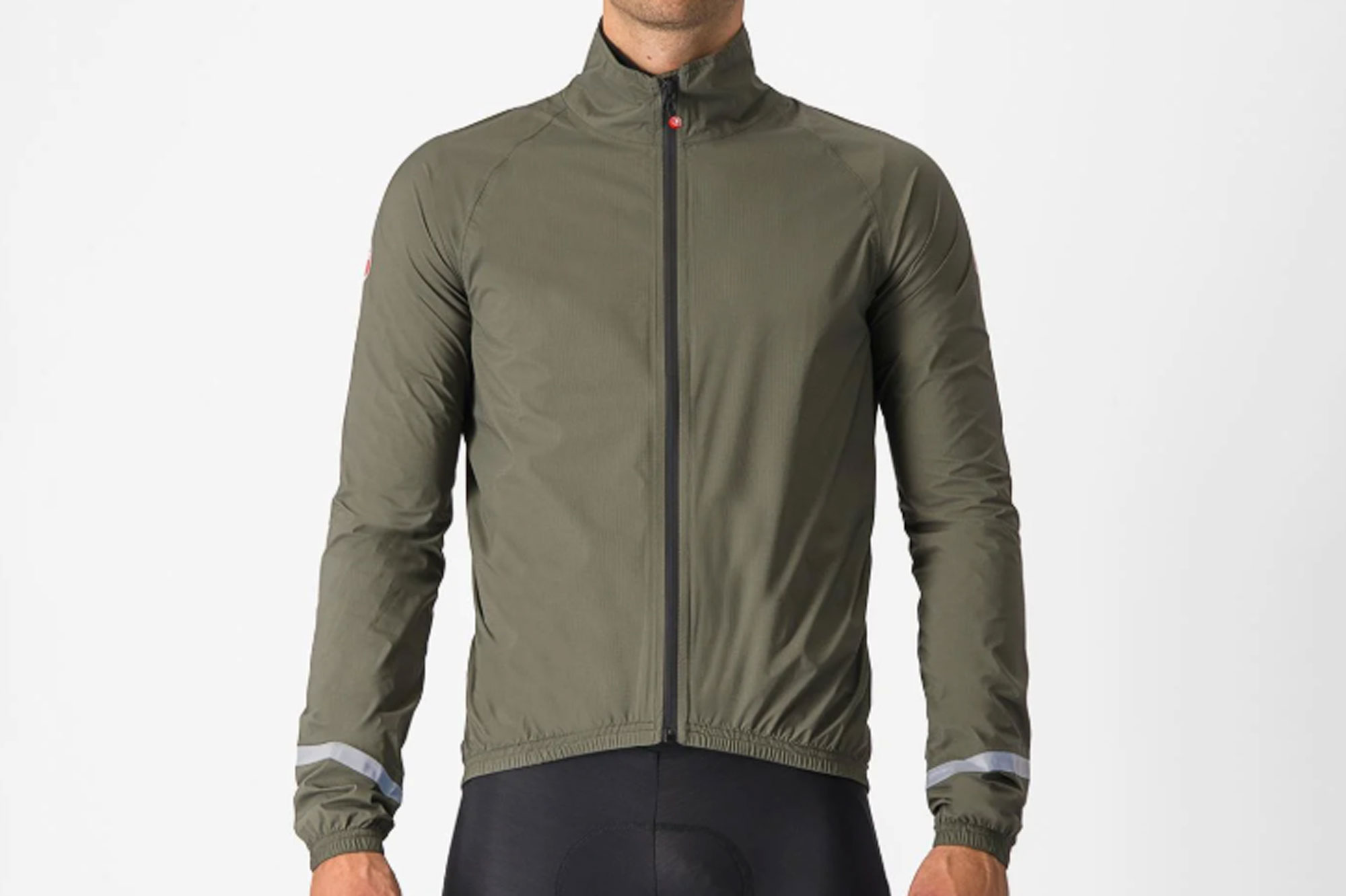
Castelli Emergency 2 rain jacket
Our expert review:
Like the Pearl Izumi Attack Barrier, this is a jacket created for those ‘just in case’ rides, where the weather forecast looks changeable. However, the Emergency 2 from Castelli is fully waterproof, using a 2.5 layer fabric that combines with a waterproof zipper and details that include a long tail and wrist closures designed to work with gloves. All told, we found it more versatile than many other packable jackets.
This versatility is extended by the cut - Castelli says it's designed to fit over its Gabba jersey and it’s also offered in both a men’s and women’s version. Added to the 360 degree reflectivity it makes it a good option for commuting, where you might need to wear it over a layer or two. As for its packability, it’s created to fit into an integrated stuff pocket. Castelli acknowledges that to keep the price point down, the Emergency 2 doesn’t excel in the breathability stakes - but as the name suggests, this isn’t a jacket to wear for the entirety of a ride anyway.
As well as our Cycling Weekly's general testing protocols, the waterproof jacket testing involved assessing each garment for packability, breathability and waterproofness. Furthermore, fit and features were considered as part of the assessment as even the best fabric in the world won't make a good cycling jacket unless it is well-cut and designed for riding.
Our testing team is entirely made up of cyclists and regular ones at that, which allows us to properly test cycling equipment properly, wherever it has been designed to perform. For cycling jackets this means out on the road and in different conditions to ascertain performance characteristics. We also look to test brand claims as well, for example if a brand says a jacket is waterproof, we will endeavor to test it in the rain, and maybe even pour water on the jacket as you can see below on a Castelli model.
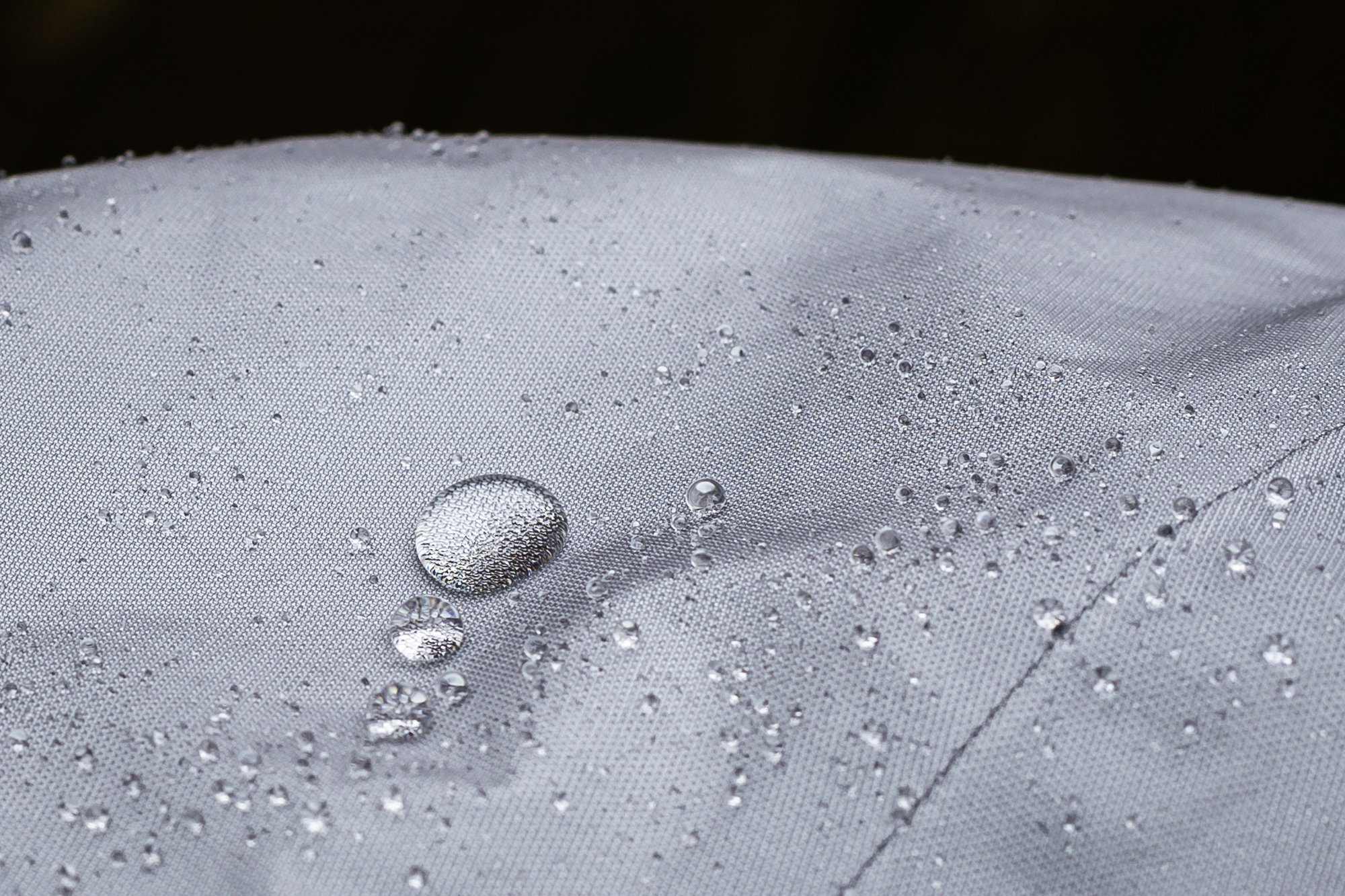
DWR in action
Ultimately we think this testing process combines our years of experience with high-quality, in-depth writing to help you make an informed buying decision. Additionally I think it is worth acknowledging that no manufacturer can pay for a good review because we want to maintain complete editorial integrity.
Above all else, the material used in the construction of the jacket is what makes the biggest difference in performance. Ideally, you want a fully waterproof material that also has a high degree of breathability. Some techy modern fabrics manage to combine both aspects into a single layer of material, making them not only high-performance but also extremely lightweight.
The only issue with such fabrics is they usually come with a high ticket price and can be a little fragile. At the entry-level, you can still expect solid performance but don't expect fully waterproof materials to be anywhere near as breathable or pack down as small.
If you want the jacket to be fully waterproof, then make sure it has fully taped seams by turning it inside out and examining it.
Most packable rain jackets follow the same vein as the traditional race cape, i.e. will be tight to the body and offer an articulated cut to fit well in a riding position.
If you prefer a looser fit or plan on wearing more layers underneath then you might want to go up a size from your usual choice. A good packable jacket should have a long sleeve length and a dropped tail to protect your derriere and keep your lower back as dry as possible.
The alternative if you're not expecting to need to remove your jacket too often and are usually carrying luggage on your rides is one of the best commuter cycling jackets.
Of course, there is always going to be a compromise when choosing a rain jacket that packs down to the size of a tennis ball, and that packability normally comes at the cost of extra features.
Don't expect multiple pockets, additional drawstring closures or even zipped vents in most cases. The construction will also be a little less robust and fabrics and zips might not be as durable, so you will need to use a bit of extra care when using.
I think we first have to define what makes a jacket packable. For many of us, that will be weight, its overall size when packed or rolled up and any features that help with this, like if it folds into its own pocket or is supplied with a small bag.
Not a single jacket in this guide hits all of these points, but they come pretty close. The Castelli Squall jacket is less than 100g/3.5oz, which means that in a pocket, it is almost unnoticeable. Both the Van Rysel and Pas Normal Studios offerings pack down nicely into a pocket, with the latter only weighing 106g/3.7oz